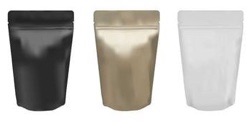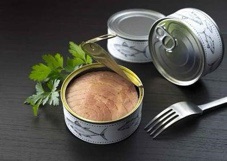Ms. Sendhur Priya S P, I M.Sc., Foods and Nutrition
INTRODUCTION
Seafood products have a short shelf life, because of their high-water activity, nearly neutral pH, and high concentration of unsaturated fats and nitrogenous non-protein components,
Thus, such products require immediate processing and/or packaging to retain their safety and quality. Customers, however, like seafood goods that are fresh and have undergone minimum processing while retaining their original qualitative attributes.
Packaging technologies include: Modified atmosphere packaging; vacuum packaging; vacuum skin packaging; active food packaging, including oxygen scavengers; carbon dioxide emitters; moisture regulators; antioxidant and antimicrobial packaging; intelligent packaging, including freshness indicators; time–temperature indicators and leakage indicators; retort pouch processing and edible films; coatings/biodegradable packaging, used individually or in combination for maximum preservation potential.
SEAFOOD PACKAGING TECHNOLOGIES
Packaging is crucial to our modern food distribution and marketing Systems. Without protective packaging, Food spoilage and wastage would increase tremendously. The advent of modern packaging technologies and new Methods of packaging materials made possible the era of convenience products. In the past, the packaging emphasized the expectations of the Producers and distributors but has now shifted towards the consumer since they are becoming more demanding and aware of the choices available. A food package usually provides a number of functions in addition to protection. When it comes to meals and medications that enter the GI system and come into contact with the body’s internal organs, directly affecting human health, the job of packaging becomes even more crucial.
The most crucial purposes of packing, among those already mentioned, are protection and preservation. With regard to the protection objective, the package protects the food contents from
- Physio-chemical and Microbiological changes which result in reductions in product quality and safety and
- Physical/mechanical damage.
Packaging serves to preserve products by shielding them from external factors including light, air, moisture, and smells, as well as biological contaminants like pests and pathogenic microbes.
Along the same line of reasoning, the function of packaging becomes even more critical when it comes to seafood products, which are extremely perishable commodities prone to both spoilage and contamination by pathogenic microorganisms. Recently, packaging has evolved from being a mere protective layer to becoming an active and interactive system that engages with the enclosed food. This transformation is evident in technologies like modified atmosphere packaging, vacuum packaging, active packaging, and intelligent packaging.
MODIFIED ATMOSPHERE PACKAGING:
Modified atmosphere packaging is cost-effective, adaptable, and readily applicable to various food items, packaging equipment, and materials.
The shelf life and safety of MAP foods is mainly affected by:
- The nature of the food,
- The mixture of gases within the package,
- The permeability of gases through the materials used.
- Temperature.
Extensive research on the subject has shown that MAP significantly prolongs the shelf life of food products, and in some cases, no other additional treatment is required during distribution. In many cases, MAP relies on the multiple hurdle principle to meet its objectives. This technology is vital for MAP as it creates an ‘unnatural’ gas environment that inhibits anaerobic bacteria growth and toxin production. Effective temperature control combined with MAP ensures product quality and safety. Optimal packaging materials with specific gas permeability properties are also essential for successful MAP applications.


VACUUM PACKAGING:
Vacuum packaging (VP) removes air from the package, reducing oxygen levels by 97–99% to inhibit spoilage organisms and minimize oxidation. This method is especially effective for frozen fatty fish like salmon, mackerel, and sardines, preventing freezer burn. Unlike VP, Modified Atmosphere Packaging (MAP) customizes gas mixtures for specific food products, optimizing shelf life by adjusting CO2 and O2 levels; for example, oily fish benefit from oxygen-free environments, while prawns thrive with oxygen. Vacuum Skin Packaging (VSP) overcomes VP and MAP limitations by tightly sealing a flexible plastic film around the product, reducing oxygen and preventing juice leakage. This approach is ideal for frozen foods, eliminating freezer burn and dehydration, and is commonly used for sliced and smoked fish fillets.

TYPES OF SEA FOODS PACKAGING:
1.Skin Packaging:
Skin packs, also known as skin packaging, are carded packaging materials often used for packaging seafood like fish fillets. The most common products sold in skin packs include fish fillets, pork chops, chicken breast, beef fillets, tools, hardware, and various other types of food and consumer goods.

2. Flexible Pouches:
Flexible pouches (also known as stand-up pouches) are single-use or resealable bags. Flexible pouches are most commonly made out of foils, various plastic formulations, and sometimes, paper.

Stand-up pouches are often used in the packaging of frozen seafood (shrimp, lobster claws, clams, mussels, scallops, etc.), snack food, coffee, granola, industrial liquids and powders, and various other consumer goods. Flexible pouches are trendy today. This is mainly because many of them are resealable, environmentally friendly, and less expensive than many of the other most popular packaging materials.
Flexible pouch’s widespread adoption is also linked to the fact that they feature a significantly lower carbon footprint than rigid packaging alternatives. Additionally, they take up much less space in our landfills than many other traditional packaging supplies.
3. Polypropylene Strapping Material:
Polypropylene (also known simply as “PP”) strapping material is one of the most ubiquitous kinds of strapping available on the market today. PP is available in a wide selection of widths, tensile strengths, and core sizes.

The most common applications for polypropylene strapping include bundling products and securing pallets of food containers including various types of frozen seafood. Other items commonly packaged with strapping include newspapers, mailers, fabrics, hay bails, and appliances.
4. Individually Quick Frozen (IQF):
Individually Quick Frozen (or IQF) is the packaging process in which smaller pieces of food are frozen individually before being packaged.

The main advantage of using IQF to produce frozen food is that the time it takes to freeze the product is much less when compared to other freezing techniques. The specific freezing time will depend on the type of IQF machinery you are using and the product you are packaging. IQF’s high-speed freezing capabilities will prevent larger ice crystals in the cells of the packaged product. Large ice crystals will destroy the membrane of the cell at the molecular level. IQF allows for the product to keep a superior shape, color, scent, and flavor profile after defrosting when compared to other types of freezing processes.
5. Cans:
Canning is a long-trusted practice and tradition within the seafood industry. Crab, salmon, tuna, clams, herring, sardines, and many other types of seafood are canned after being processed.
